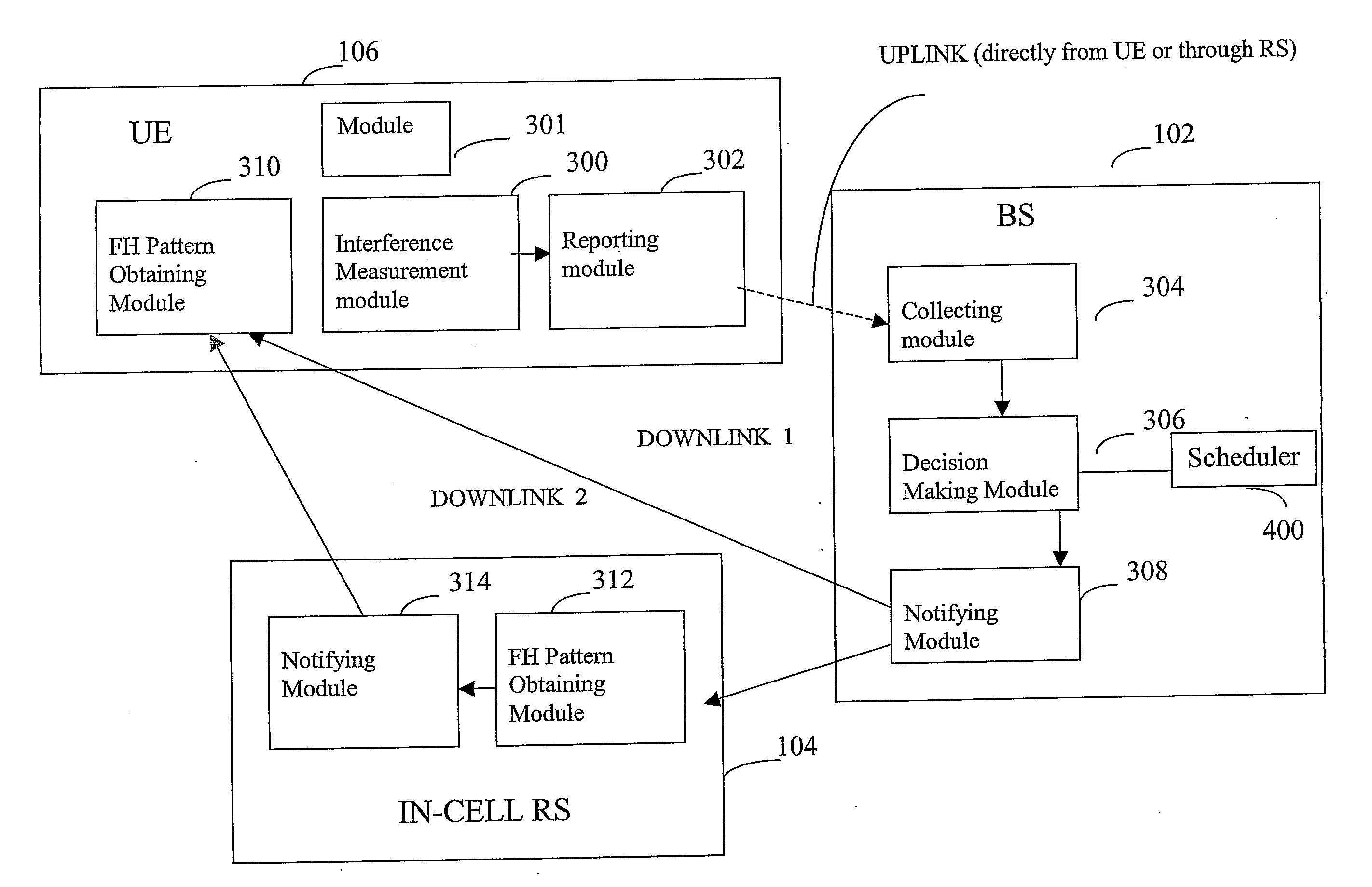Method and System for Capacity and Coverage Enhancement in Wireless Networks With Relays
a wireless network and relay technology, applied in the field of network communication, can solve problems such as outages, user interference from other cells, and certain user equipment receiving interferen
- Summary
- Abstract
- Description
- Claims
- Application Information
AI Technical Summary
Benefits of technology
Problems solved by technology
Method used
Image
Examples
Embodiment Construction
[0048]FIG. 5 illustrates a cellular relay network system 110 to which coverage enhancement mechanism in accordance with an embodiment of the present invention is suitably applied. The cellular relay network system 110 is a rate controlled wireless network system with selective relays.
[0049]The cellular relay network system 110 includes a plurality of cells 100. The cell 100 implements the capacity (maximize aggregate per cell throughput) and coverage (minimize outage probability and increase the data rate availability over the area of the cell) enhancement mechanism which is capable of improving capacity and coverage for both downlink and uplink in the cell.
[0050]The capacity and coverage enhancement mechanism includes dynamic resource partitioning for dynamically partitioning resources, and interference avoidance / averaging mechanism for creating frequency hopping patterns (FHs) and allocating frequencies based on interference measurements within the cell.
[0051]The interference avoi...
PUM
 Login to View More
Login to View More Abstract
Description
Claims
Application Information
 Login to View More
Login to View More - R&D
- Intellectual Property
- Life Sciences
- Materials
- Tech Scout
- Unparalleled Data Quality
- Higher Quality Content
- 60% Fewer Hallucinations
Browse by: Latest US Patents, China's latest patents, Technical Efficacy Thesaurus, Application Domain, Technology Topic, Popular Technical Reports.
© 2025 PatSnap. All rights reserved.Legal|Privacy policy|Modern Slavery Act Transparency Statement|Sitemap|About US| Contact US: help@patsnap.com



